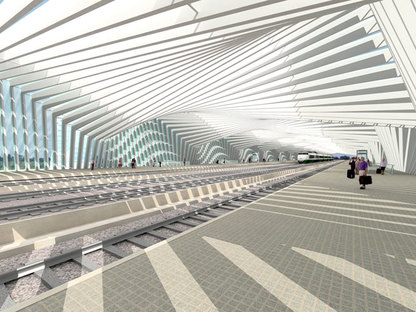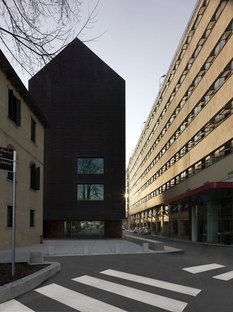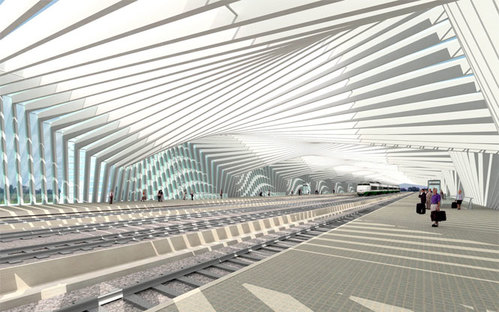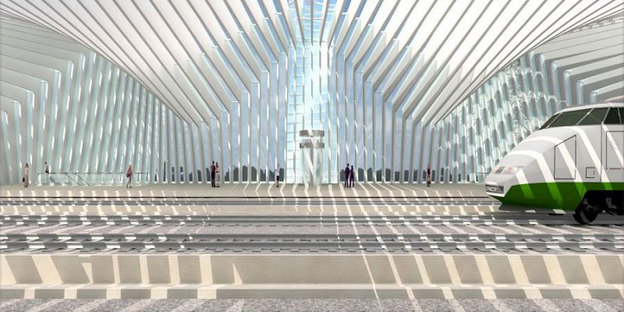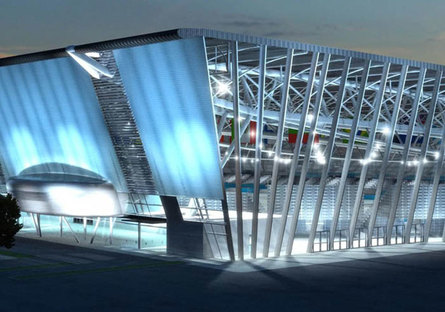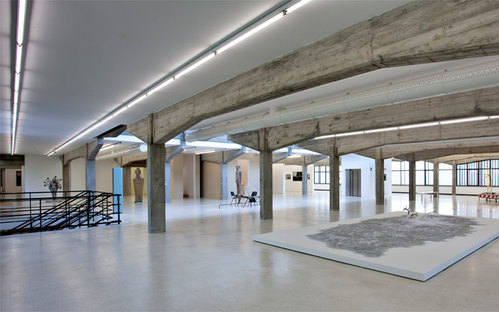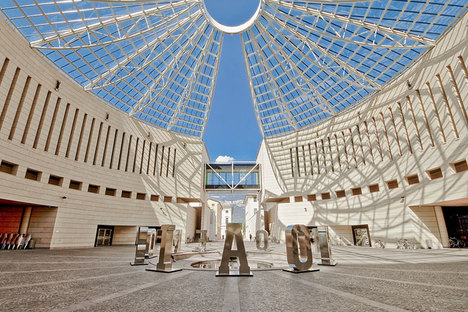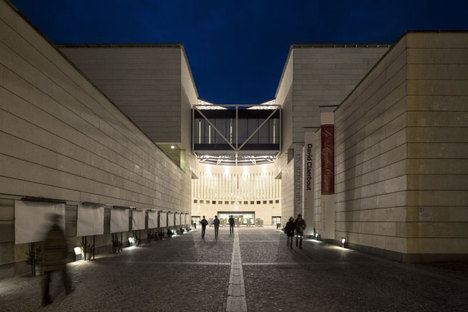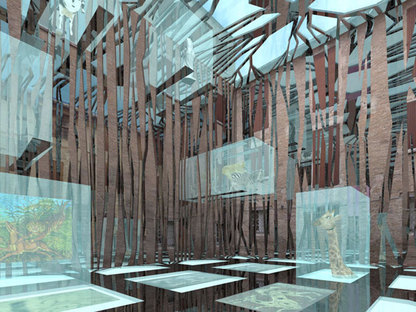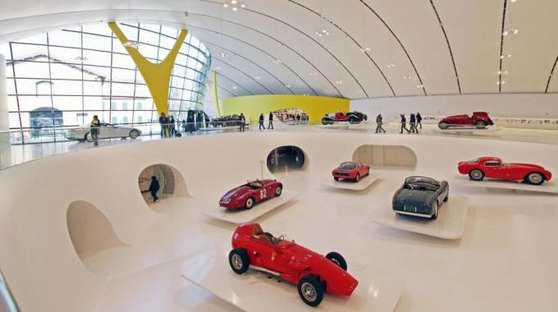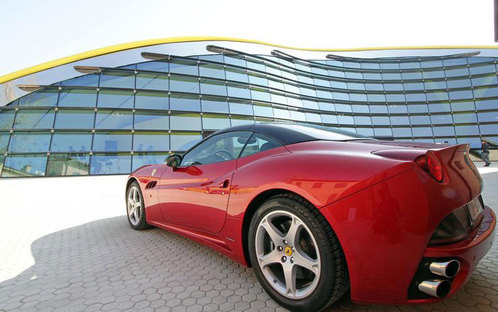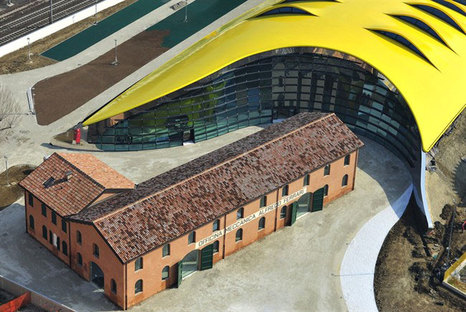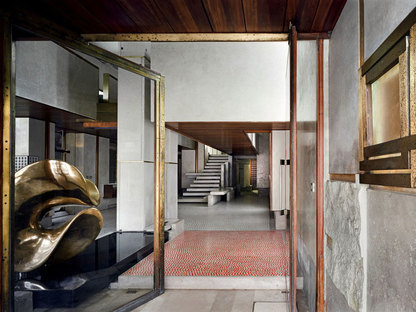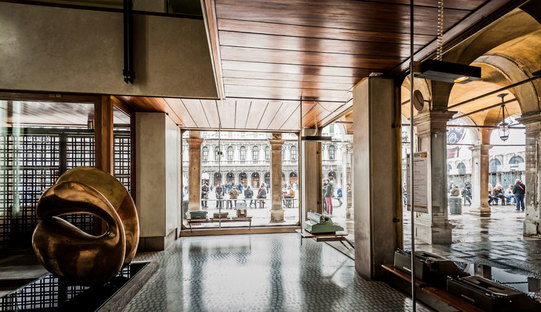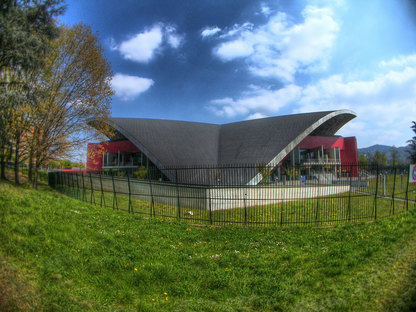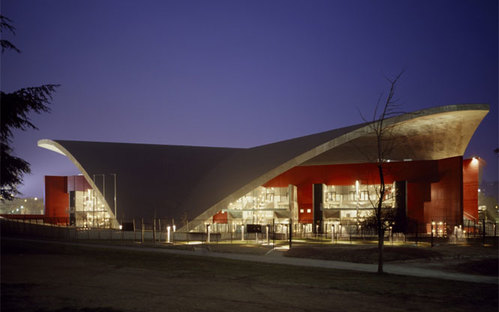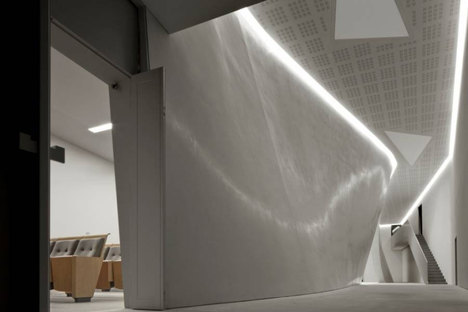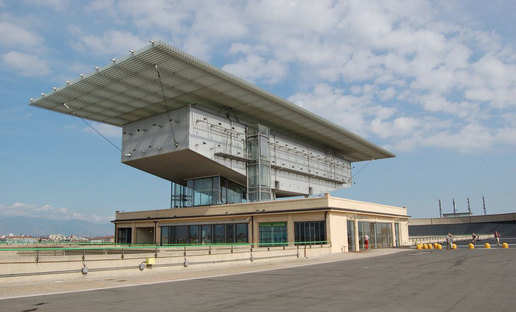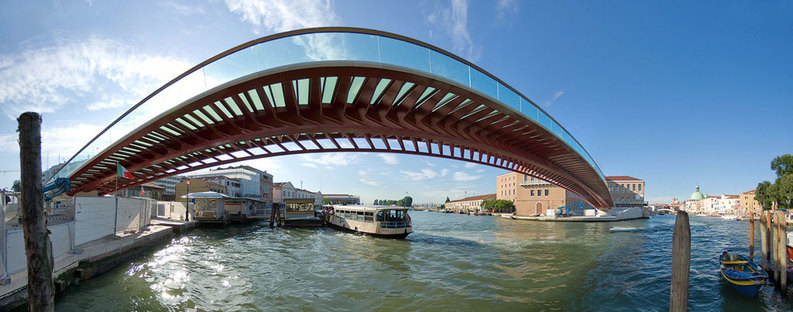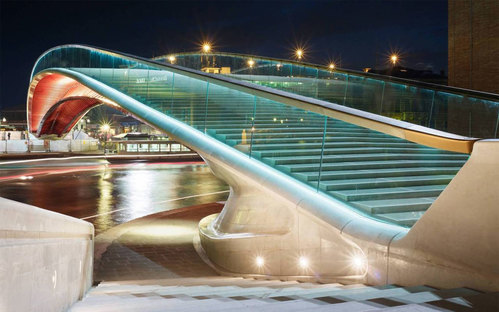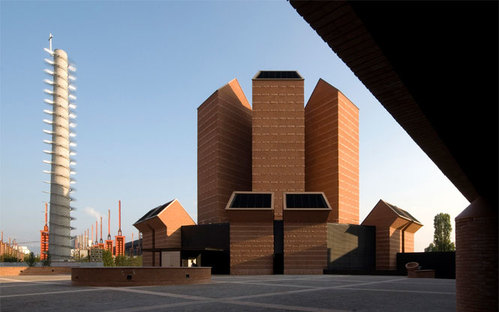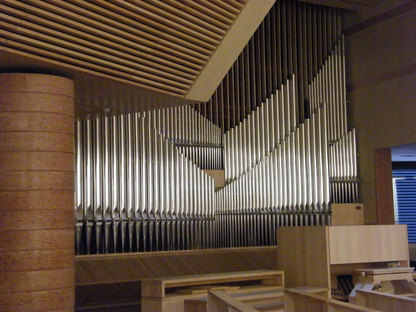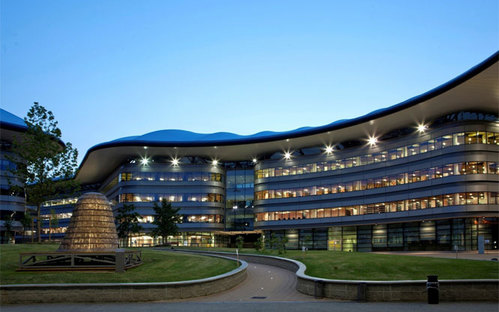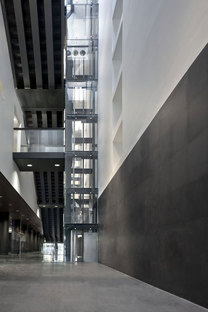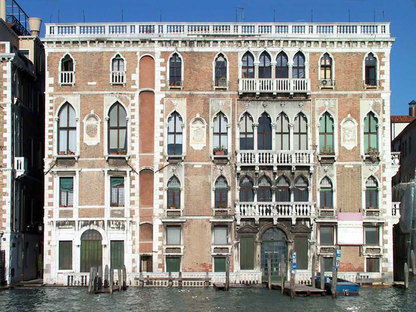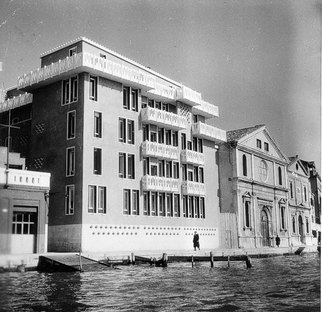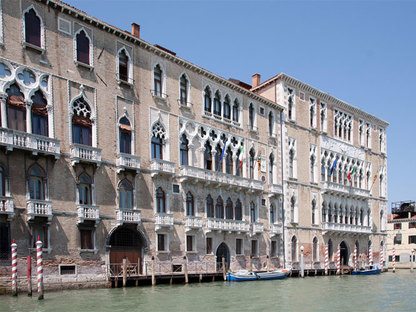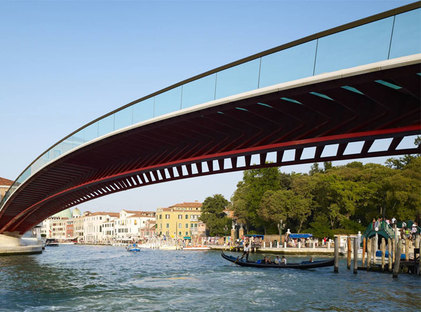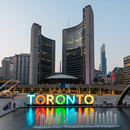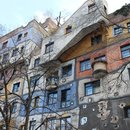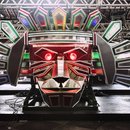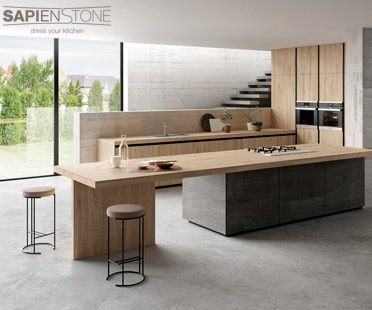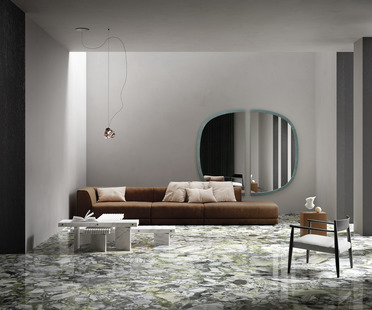14-04-2015
Day trips from Expo Milano 2015
Tadao Ando, Mario Botta, Gae Aulenti, Santiago Calatrava, Italo Rota, Norman Foster, Massimiliano Fuksas, Renzo Piano, Ignazio Gardella,
underground, Expo, Museums, Auditorium, Offices,
Arts,
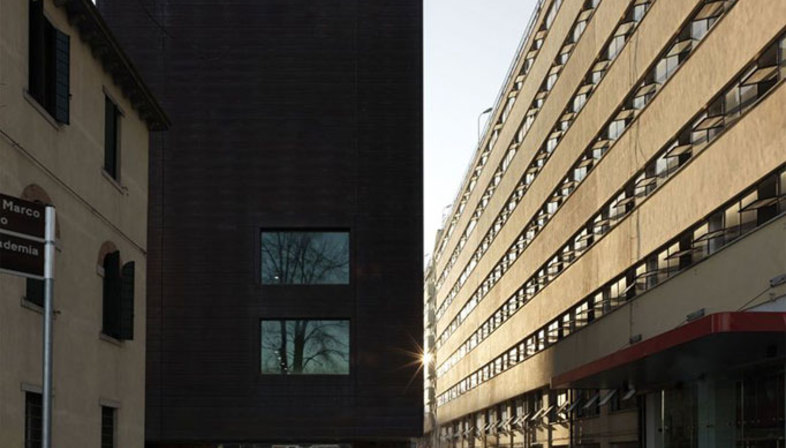
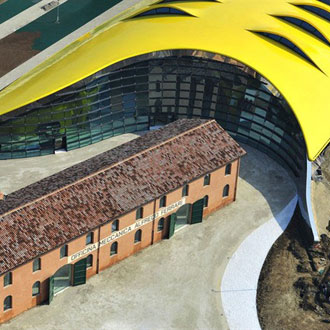
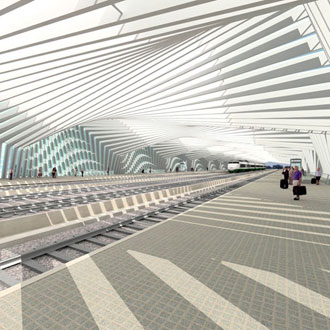
Three innovative museums in Modena and Reggio Emilia.
Santiago Calatrava’s High-speed Railway Station in Reggio Emilia is an essential stop on this itinerary, which continues on to Modena to visit Enzo Ferrari Museum in Maranello. The museum is clad in an architectural wrapper designed by Future Systems and built by architect Andrea Morgante: an architectural link between past and present, through the arched shape of the hood of a car broken up by the air intakes of a giant radiator and by the yellow colour representing Modena.
"Conserve to innovate" is Italo Rota's motto in his futuristic plan for renovation of Reggio Emilia Civic Museums in the historic Palazzo San Francesco, an innovative project in which the city’s history and fragments of modern life suggest an interpretation of the past encouraging a vision of the future with strong roots in collective memory.
Lastly, the Maramotti Collection is exhibited in the reclaimed spaces of the former Max Mara factory outside Reggio Emilia: a respectful reclamation project which makes a beautiful museum out of one of the most significant examples of industrial archeology in the Reggio area, making it into the home of an important contemporary art collection.
Local specialties to sample along the way: gnocco fritto, a fried dumpling eaten with cold cuts; green or squash tortelli; tagliatelle with meat sauce; and cappello del prete, a unique pork sausage shaped like a priest’s three-cornered hat - all washed down with red Lambrusco wine.
A day in Venice.
As soon as you come out of Venezia Santa Lucia railway station you cross Santiago Calatrava’s Constitution Bridge (Ponte della Costituzione). Your first destination for viewing modern architecture in Venice will be the New Office of the Court, located in a former tobacco workshop which has been completely covered with rusted copper cladding. Then go to see Casa Cicogna, a historic stop on the itinerary designed by Ignazio Gardella, reconciling modern architecture with the city’s historic centre. Go on to the Gallerie dell'Accademia, designed by Tobia Scarpa, reopened after renovations at the end of 2013. Then allow yourself to be enchanted by Palazzo Grassi, home to the Pinault Foundation, with architectural and museographic design by Tadao Ando. An icon of 20th century Italian architecture is the Olivetti store in Piazza San Marco by Carlo Scarpa; from here, go on to Cà Giustinian, the historic headquarters of the Biennale.
Specialties to try along the way: rice with peas, pasta with beans, bigoli (thick whole-wheat spaghetti made with a press), dried salt cod, and Venetian liver, accompanied by a glass of prosecco from Conegliano or Valdobbiadene.
Turin is a world capital of design and especially car design – a key theme when discussing smart mobility. It only takes an hour to get there from Milan, and from the railway station you can set out on foot to the Atrium in Piazza Solferino, designed by Giugiaro Architettura. Two glulam arches link two big flowerbeds in the piazza. It’s worth visiting the metro station designed by architect Bernard Kohn, who designed a “model station”. The creative part distinguishing one underground space from another consists of the artist’s graphics: Ugo Nespolo’s panels describe different aspects of the city, from its culinary treats to its hinterland and its local traditions. At Porta Palazzo, visit the clothing pavilion by architect Massimiliano Fuksas and then go on to the Spina 3 district to visit the Church of the Holy Face (Santo Volto) by architect Mario Botta. Don’t miss the Faculty of Humanities, designed by Norman Foster, Giugiaro and Cemerana; conclude by stopping by the Lingotto. La Bolla, the centre’s Auditorium, was designed by Renzo Piano, as was the Agnelli Picture Gallery; conclude your tour with a visit to the Palavela by well-known architect Gae Aulenti.
Specialties to try along the way: plin (agnolotti stuffed with roast), agnolotti, bagna cauda (vegetables dipped in a sauce made with olive oil, anchovies and garlic), truffles, mixed boiled meats and vegetables, braised meat, breadsticks, and chocolate, with a glass of Dolcetto.
Mart of Rovereto
Since 2002, Mart Rovereto, the Rovereto branch of the Museum of Modern and Contemporary Art of Trento and Rovereto, has been located in a building designed by Mario Botta in partnership with Rovereto engineer Giulio Andreolli. A big glass and steel dome in the middle of the building covers the central plaza of the museum entrance. The architects wished to maintain Mart’s continuity with the historic buildings, both public and private, that surround the museum and herald its presence: Palazzo del Grano, Palazzo Alberti, Teatro Zandonai and Palazzo dell'Annona. Along with Mart, the cultural district designed by Mario Botta is completed by Rovereto Civic Library and Fausto Melotti Auditorium. The ground floor of the Mart Rovereto building contains a bookshop, conference rooms and exhibition halls. Rovereto is best-known for Mart, and for the Depero House and Museum of Futurist Art, but it is also interesting to visit the Historic War Museum, the Bell for the Fallen, the city’s Civic Museum - one of Italy's oldest - and Palazzo Alberti Poja, home to the city art gallery. The town centre is itself an open-air museum of medieval and Venetian history, with its coffee shops, traditional flavours and historic family-run shops.
Specialties to try along the way: canederli dumpling soup with bacon, barley soup with smoked meat, pork ribs with sauerkraut, strudel and apple fritters, washed down with a Mueller Thurgau or Gewurtztraminer.
Cintya Concari










